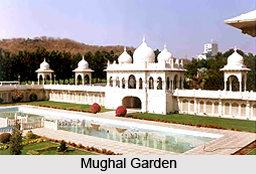 Ramoji Film City is one of the most comprehensive and professionally planned film production centres in the world. It is considered to be the largest integrated film city in the world. The place is popular among various film circles in the world not only for its visual feast but also for its multimedia and editing suit techniques. In addition to film-related-people, millions of people from various places also visit this film city. Ramoji Film City was opened by entrepreneur-cum-film producer Ramoji Rao.
Ramoji Film City is one of the most comprehensive and professionally planned film production centres in the world. It is considered to be the largest integrated film city in the world. The place is popular among various film circles in the world not only for its visual feast but also for its multimedia and editing suit techniques. In addition to film-related-people, millions of people from various places also visit this film city. Ramoji Film City was opened by entrepreneur-cum-film producer Ramoji Rao.
Location of Ramoji Film City
It is located in Anajpur village, Hayathnagar Mandal in Hyderabad, Telangana. Situated at an hour"s distance from Hyderabad, it is spread over an area of more than 1000 acres.
History of Ramoji Film City
In the year 1996, it was established by Ramoji Group. The Group`s association with Indian cinema through Usha Kiran Movies led to the creation of the Ramoji Film City. Guinness World Records has certified it as the world"s largest film studio complex.
Attractions of Ramoji Film City
Ramoji Film City is tastefully landscaped, meticulously maintained, exquisitely designed with palace-like edifices, temples, beautiful rock figurines, shopping arcades, railway station, airport and all that a producer can dream of.
Some of the popular spots of the film city are Askari Garden, Japanese Garden, Sun Fountain Garden, Mughal Garden, Angel"s Fountain Garden, Bhagavatham Set, North Town, and Princess Street. Askari Garden is Ramoji Film City"s first garden. The Sun Fountain features a chariot drawn by horses which is simply magnificent. Mughal Garden exhibits the regal charms and elegance of Mughal era. All a producer has to do is, enter the film city with the script and the cast and leave with the completed film reel.
 A number of films in a number of languages such as Hindi, Tamil, Telugu, Malayalam, Kannada, Gujarati, Bengali, Oriya, Bhojpuri, and English to name a few are produced here every year. Several TV commercials and serials are also produced here.
A number of films in a number of languages such as Hindi, Tamil, Telugu, Malayalam, Kannada, Gujarati, Bengali, Oriya, Bhojpuri, and English to name a few are produced here every year. Several TV commercials and serials are also produced here.
It is also a popular tourism and recreation centre. It is home to both natural and artificial attractions and is ideal for holidays. The film city also provides the facility of booking banquet hall for corporate conventions and corporate retreats.



















